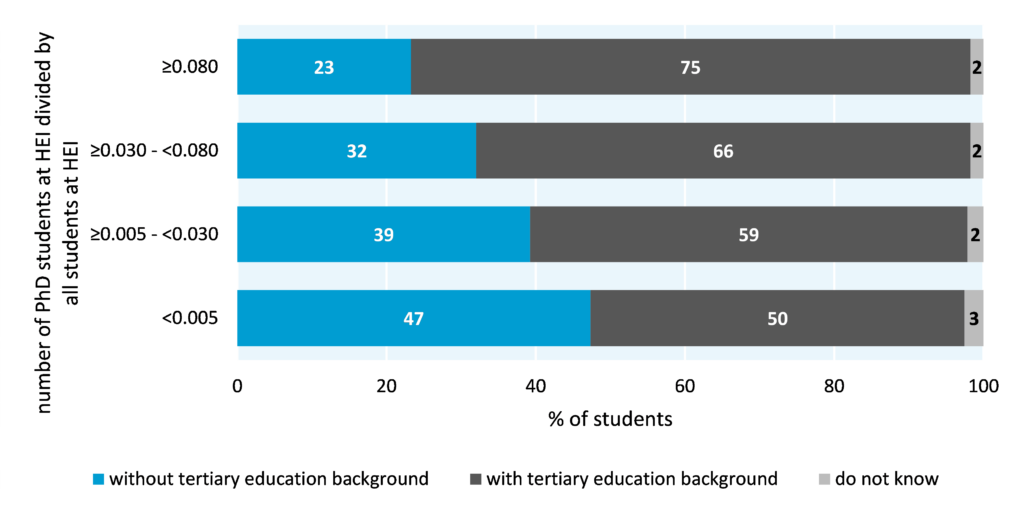Guest author: Hendrik Schirmer, DZHW
The EUROSTUDENT project has been collecting information on students’ socio-economic and study-related backgrounds, their study conditions and experiences, including international mobility, and their living conditions for more than two decades, aiming at inspiring policy debates on the topic of the social dimension. In the current eighth round EUROSTUDENT expands its scope by enriching the collected student survey data from 25 countries of the European Higher Education Area with contextual information about students’ higher education institutions (HEI) using data compiled in ETER. At this pilot stage of our cooperation, eight aggregated indicators from the ETER database have been integrated into the EUROSTUDENT national data sets, namely:
- Institutional control (public HEI vs. private HEI)
- PhD status (non-PhD-awarding HEI vs. PhD-awarding HEI)
- Institutional size (number of academic personnel as measured by full-time equivalents, in four categories)
- Education intensity (number of students at ISCED levels 5-7 divided by academic staff, in four categories)
- Master orientation (number of master students divided by number of diploma, bachelor and master students, in four categories)
- PhD intensity (number of PhD students divided by number of students, in four categories)
- Subject concentration (sum of squares of share of bachelor and master students in each ISCED-F 2013 subject field (Herfindahl concentration index), in three categories)
- Relative specialisation in natural sciences and engineering (share of bachelor and master students in corresponding fields normalised by average share in the whole sample, in four categories)[i]
The combined data from ETER and EUROSTUDENT now lets us look at both the information on educational institutions and the actual experiences of students that can only be obtained from EUROSTUDENT data.
Thanks to our collaboration, we can now look at how a student’s family background, specifically their parents’ education level, drawn from the EUROSTUDENT survey, is linked to the academic strength of their HEI (based on ETER). Our early data shows some interesting trends. For example, 75% of students at HEIs with strong research programmes (operationalised by PhD intensity at the HEI) come from families where at least one of the parents/guardians has a tertiary education degree. On the other hand, at HEIs with very low research intensity, the mix of first-generation and non-first generation students is about even.

Data source: EUROSTUDENT 8, D.3.
Note(s): Cross-country average, based on data from CZ, DK, EE, FI, HR, HU, CH, IE, IS, LT, LV, NL, NO, PL, SE, SK. Analysis based on preliminary data.
EUROSTUDENT question(s): 6.7. What is the highest level of education your mother/#guardian and father/#guardian have obtained?
The integration of the ETER indicators to the EUROSTUDENT data opens many analysis opportunities to address questions such as:
- Is there a relationship between education the satisfaction of students and their chances for study success?
- How does the source of HEI funding interact with students’ perceived quality of studies (and, again, social selectivity)?
- Are digitalisation processes at HEI with STEM focus implemented differently than at universities with a wider range of study courses?
Corresponding data will be provided from the summer of 2024 at https://database.eurostudent.eu/.